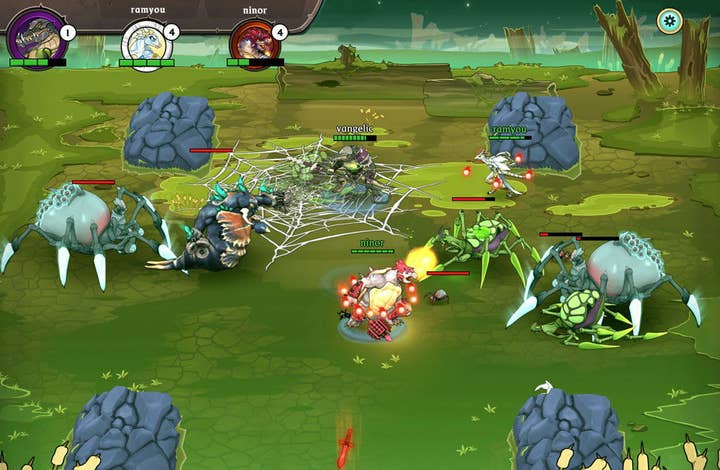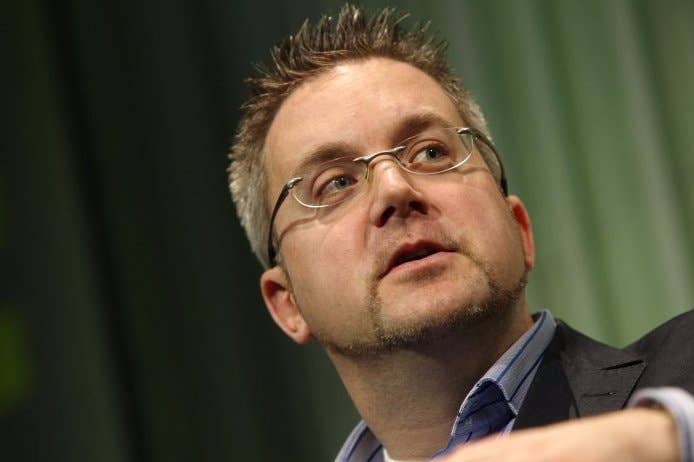Gameforge: "In a competitive market quality is the only answer"
CEO Carsten van Husen on a big opportunity for core developers in the shifting mobile market
Gameforge once had an MMO with more players than World of Warcraft, and it was all thanks to free-to-play.
The game was Ymir Entertainment's Metin 2, which Carsten van Husen discovered in 2006 on a trip to South Korea, where the market was dominated by a crazy business model that let people play for nothing. At that time van Husen was CEO of Gameforge 4D, a newly minted affiliate of Gameforge that was exploring the lucrative and relatively open market for client-based MMOs on PC. That opportunity was why van Husen had joined the German publisher in the first place. Browser games, then the core of the company's business, were profitable, but van Husen knew that was money still on the table for anyone quick enough to grab it.
Metin 2 fit the bill perfectly. All it needed was a new business model, and like virtually all client-MMOs in western markets at that time, that model would be pay-to-play.
"That worked for me, because I knew there was more money coming in than I had spent," says van Husen, who became CEO of Gameforge as whole in March last year. "But my founders at Gameforge had been experimenting with free-to-play for a while already in the web games. They really forced little Carsten to change to the free-to-play model. I didn't want to do it."
At first, those suspicions were vindicated, Metin 2's costs rising as its revenues declined. Over time, however, the picture changed dramatically. At its peak after the implementation of the free-to-play model, Metin 2 had 9 million monthly active users, at a time when World of Warcraft had between 10 and 12 million subscribers in total. At any given point, van Husen says, that would mean three times as many people were playing Metin 2 than Blizzard's behemoth.
”You can always bet on luck, but we're a company with 450 employees. We can't call that our strategy"
All lingering doubts over the potential of free-to-play vanished from his mind. Indeed, by 2008 van Husen had become an advocate of the model, speaking at event after event to inform other western companies of its promise.
"Back then, not many people wanted to listen to us: 'It's only because they cannot sell it that they want to give it away for free.' And then people woke up, and for about five years people started to listen. I attended a lot of conferences, evangelising the principle over and over.
"I'm not so evangelical any more. There's no more need to focus on praising the free-to-play thing, even if I do believe that it will be dominant [in the future]."
The disappearance of that evangelical streak is more complex than it first appears. When van Husen talks about free-to-play now it's with a more measured tone, and his session at the MEGA Games Conference in Beirut, Lebanon is a case in point. Called "The Lemming Thinking," it advised developers not to charge towards the model like those suicidal rodents. In terms of free-to-play, the battle for the hearts and minds of developers has been won to such an extent that the market is both fiendishly difficult to crack and entirely unforgiving to those who make elementary mistakes. There is a vast ravine between the practical reality of free-to-play games and King's bottom line, and it is littered with companies who were too hasty in their approach. More than ever before it is vital that developers adhere to their most fundamental principles.
"I advise you not to go looking for the free-to-play trend as a lemming, but understand that games must simply be fun," van Husen said to the assembled crowd of Middle Eastern and North African game developers, most of whom are working on platforms where free-to-play is entirely dominant. "If a game isn't good, you're screwed anyhow. Think of it as an additional task that you need to work on. Free-to-play should always add to the game experience, and unfortunately that's not always easy."
Gameforge has always focused on more "ARPU rich" mid-core and hard-core games, a market that van Husen believes should be exempt from many of the difficulties associated with building a free-to-play business. Casual game developers, on the other hand, are meeting the most challenging issues head on, because they generally rely on a very small number of players for a large proportion of revenue - often as little as 0.5 per cent of the total user-base contributing more than 50 per cent of all sales. Casual developers need effective mechanisms to monetise those whales, but balancing that need against the enjoyment of the remaining 99.5 per cent of players is just one of many difficult problems associated with making the free-to-play model work for a casual market.
"Personally, I'm pessimistic about casual games on mobile. I don't know how you can make a rational approach"
"Personally, I'm pessimistic about casual games on mobile," van Husen says. "I don't know how you can make a rational approach on that. It's a lottery, I think. I mean, if you're Ilkka Paananen [founder and CEO of Supercell] then all due respect. If you do it three times it's not luck any more. But otherwise, if you're going in the same casual direction as King, I think it's a lottery."
However, while that may be true, van Husen is very clear that this uncertainty has little to do with the free-to-play concept itself, and more to do with the the model's implementation. The difference with free-to-play is the speed with which so many line up to criticise it when any game makes mistakes.
"When you observe that I see problems with the free-to-play model, I would also like to offer this in comparison," he says. "I have problems with games: with good games and bad games, with smart and stupid monetisation. If a series of bad shooters came out nobody would say that the whole FPS genre is worthless, so if a series of stupidly monetised free-to-play games comes out you can't say that this way of presenting games is worthless. I just don't see it.
"We are beyond the need to behave like a secluded family protecting its castle. There are all sorts of business models out there."

More importantly, there is also a broader variety of games. When Gameforge launched its first mobile titles in 2012 it gathered more than 20 million installs in 12 months, but the casual nature of the mobile audience was all too obvious. When I ask how much revenue those installs generated, van Husen answers with a shrug: "Not much." Certainly not enough to inspire Gameforge to pivot away from the core-focused PC games on which the company was built.
But the mobile market is in the midst of a transition, with more and more console and PC players seeing smartphones and tablets as serious platforms for gaming. The emergence of hardcore mobile developers like Winko and Super Evil Megacorp. is evidence of that shift, and Gameforge is ready to capitalise on the opportunity with games like its ambitious role-playing game, Sigils: Battle for Raios.
"We are beyond the need to behave like a family protecting its castle. There are all sorts of business models out there"
Indeed, Sigils represents a major financial investment for Gameforge, in terms of both budget and development time. Of course, investments on that scale carry no small measure of risk, but van Husen compares it to the risk he took with Metin 2 all those years ago. Gambles like this, he says, are essential if you want to be a prime mover in a new market. As long as your riskiest plays are backed by quality products you needn't end up just another lemming,.
"We believe that's exactly what's needed now," he says. "It's high risk, potentially high reward. But especially on tablets, there is demand for core gameplay that has not been satisfied.
"In a very competitive marketplace quality is the only answer, the only strategy. You can always bet on luck, and if you're a VC and four years ago you put 20 stakes in different mobile games, then maybe luck makes it. But we're a company with 450 employees. We can't call that our strategy.
"Our strategy is AAA quality, fully concentrating on the core with predominantly free-to-play games, but not necessarily always. That's a challenge."

